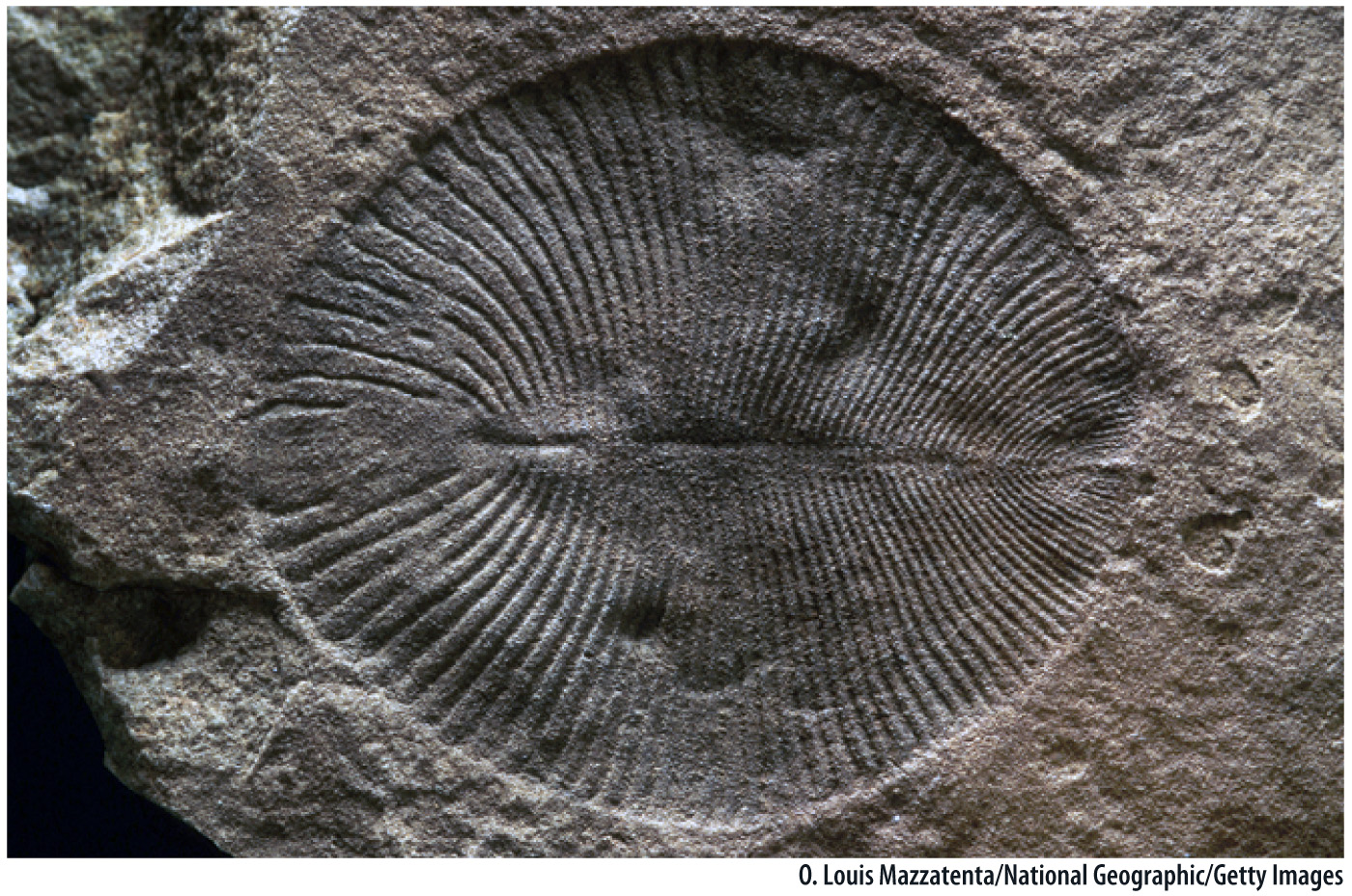Fossils and phylogeny show that animal forms were initially simple but rapidly evolved complexity.
Phylogeny suggests that animals are relative latecomers in evolutionary history, and the fossil record confirms this hypothesis. Life originated more than 3.5 billion years ago, but, as discussed in previous chapters, microorganisms were the only members of ecosystems for most of our planet’s history. As noted in Chapter 28, macroscopic fossils of organisms thought to be animals first appear in rocks deposited only 579 million years ago. Called Ediacaran fossils after the Ediacara Hills of South Australia where they were discovered, these fossils have simple shapes that are not easily classified among living animal groups (Fig. 44.39; see also Fig. 28.13).

Phylogeny suggests that we should look for sponges, cnidarians, and other diploblastic animals among the oldest animal fossils, but sponges, at least, are rare among Ediacaran fossils. This is possibly as much because of preservation (or the lack of it) as evolution, because sponges that do not make mineralized spicules have left few fossils. Instead, a majority of Ediacaran fossils show simple, fluid-
973
Why did the first animal radiation occur so late in the evolutionary day? Scientists continue to debate this question, but part of the answer appears to lie in Earth’s environmental history. Geochemical data suggest that only during the Ediacaran Period did the atmosphere and oceans come to contain oxygen in quantities sufficient to support the metabolism of large, active animals.